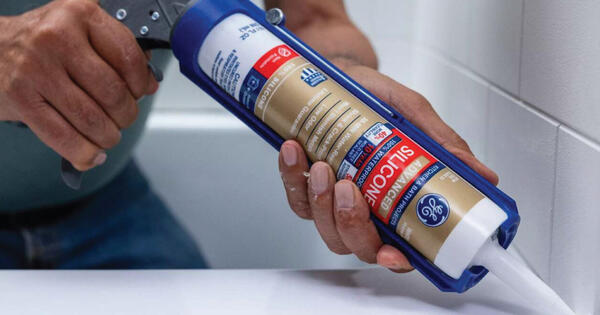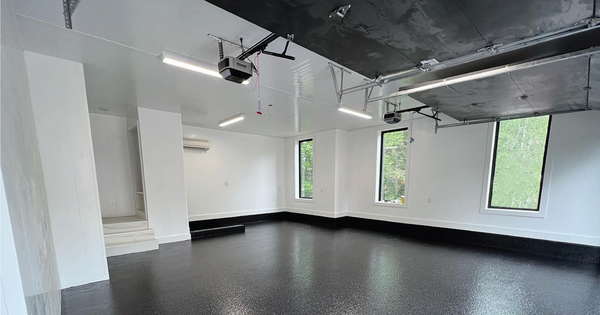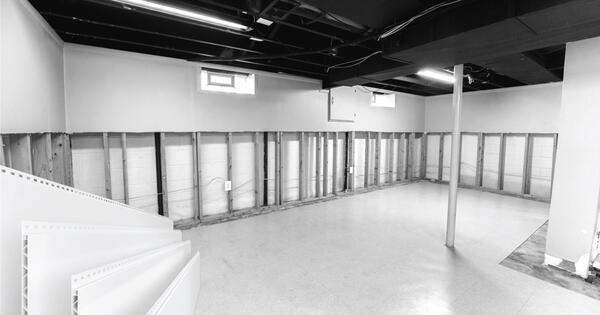When you're setting up a DIY indoor garden or grow room, it’s easy to focus on lighting, airflow, and how to care for your plants. But the materials you choose for your walls and ceiling are just as important. They don’t just shape the space — they help manage the environment inside it.
Without the right setup, you’re bound to run into problems. Moisture can sneak into the walls and create a perfect spot for mold and mildew to grow. Poor insulation can make it tough to maintain a steady temperature. Surfaces that soak up light instead of reflecting it can hurt your growing results. And if your setup is hard to clean, you risk dealing with pests, bacteria, or even cross-contamination between crops. So while it might feel like a finishing touch, your wall and ceiling materials are actually key to building a clean, controlled, and productive space for your plants.
Key Environmental Requirements for Grow Rooms
A grow room isn’t just another part of your home. It’s its own mini ecosystem with some pretty specific challenges. The materials you choose for your walls and ceiling need to hold up in these conditions — and help you manage them, too.
Here’s what your wall and ceiling materials need to handle in a typical grow room:
- High humidity levels: Most indoor gardens require humidity between 50 to 70% to keep plants healthy.
- Warm temperatures: Depending on the crop, you're often maintaining temperatures between 70 to 85°F.
- Frequent moisture and condensation: From watering to misting systems, moisture is always present.
- Pest pressure: Damp, plant-filled environments can attract insects and fungal spores.
- Intense lighting: Artificial grow lights generate heat and need reflective surfaces to maximize efficiency.
The right wall and ceiling materials can support these conditions in several ways:
- Mold and mildew resistance: Non-porous materials that won’t absorb moisture help prevent biological growth.
- Ease of cleaning: Smooth, washable surfaces make it easy to sanitize between harvests or whenever contamination occurs.
- Light reflectivity: White or glossy finishes can bounce light around the room, reducing energy needs and promoting even plant growth.
- Thermal insulation: Materials that help regulate temperature changes can reduce stress on your plants and ease the load on your HVAC system.
Nailing down these details helps keep your indoor garden running smoothly — productive, efficient, and clean, without turning into a maintenance headache.


Common Wall & Ceiling Material Options for DIY Indoor Gardens
Not every building material is cut out for a grow room. Some may be cheap or simple to install, but if they can’t handle moisture or are hard to keep clean, they’ll end up causing more trouble than they’re worth. Here’s a breakdown of common wall and ceiling options — with pros and cons to help you decide what’s right for your setup:
| Material | Pros | Cons |
|---|---|---|
| Drywall |
|
|
| Painted Plywood |
|
|
| PVC Panels |
|
|
| FRP Panels |
|
|
| Metal Panels |
|
|
As you compare your options, think about how often you'll be watering, whether you're planning to expand the grow room later, and how important things like cleaning and light reflection are to your setup. While drywall might look like the budget-friendly pick, the long-term upkeep and risks often outweigh the short-term savings. On the other hand, PVC or FRP are built to last and thrive in tough growing conditions — giving you less to worry about over time.
Why Trusscore Wall&CeilingBoard Is Ideal for Grow Rooms
When you’re building your own indoor garden, having the right wall and ceiling setup can save you time, money, and a lot of stress. Trusscore Wall&CeilingBoard was made with spaces like these in mind — and it’s built to perform.
Here’s what makes Trusscore a standout option:
- 100% moisture and mold resistance: Unlike drywall or plywood, Trusscore panels won’t absorb water or warp. Their non-organic composition means mold and mildew can’t grow — even in extreme humidity.
- Bright white finish reflects light: The glossy surface bounces 90% of available light around the room, reducing the need for extra lighting and helping plants grow more evenly and efficiently.
- Easy to clean with just soap and water: Dirt, plant debris, and splashes wipe away in seconds — no scrubbing, sanding, or repainting needed.
- Simple DIY installation: Trusscore panels feature an interlocking tongue-and-groove system that clicks together with minimal tools. It’s a job most homeowners can tackle in a weekend.
- Durable and impact-resistant: Whether you’re mounting shelves, adjusting fans, or brushing up against the wall with a hose, Trusscore holds up without denting or degrading.
- Non-porous and hygienic: The surface of Trusscore panels creates a sterile environment that resists pests and contamination, which is essential for healthy plants.
If you're committed to building a grow room that’s efficient, long-lasting, and easy to maintain, Trusscore gives you the peace of mind that standard materials just can’t offer.
Considerations for Ceiling Panels in Grow Rooms
Ceilings don’t always get the attention they deserve — but in a grow room, they matter just as much as the walls. Heat and humidity rise, and if your ceiling materials can’t handle that, you’ll run into issues with condensation, mold, and uneven lighting.
Here are a few key things to consider when planning out your ceiling:
- Moisture resistance is a must: Ceiling panels should be just as moisture-resistant as wall materials. Trusscore panels, for example, won’t sag or degrade if exposed to constant humidity or drips from overhead equipment.
- Grow light integration: If you’re planning to suspend grow lights, choose a ceiling material that’s strong enough to support hardware or easily accommodates mounting brackets. Trusscore panels can be screwed into standard ceiling framing to support light fixtures or ventilation units.
- Condensation control: Smooth, non-porous surfaces reduce condensation buildup and help prevent dripping. Materials like PVC and FRP are good choices here, whereas drywall and unsealed wood can absorb moisture and become saturated.
- Light reflectivity: Bright ceilings help amplify your lighting setup. Glossy white surfaces, like those found on Trusscore panels, increase reflectivity and help evenly distribute light across your plants.
So don’t leave the ceiling as an afterthought. It plays a major role in keeping your grow room clean, efficient, and under control.
Installation Tips for DIYers
Installing panels for your grow room walls and ceilings might sound tricky, but it’s absolutely doable — especially if you’ve got the right materials. A little prep and a few tools can go a long way in building a space that’s built to last.
- Start with the right tools: Most panel systems (like Trusscore) require only basic tools: a measuring tape, level, saw, drill/driver, and screws. You might also need a utility knife and a chalk line for clean cuts and alignment.
- Follow stud framing for secure installation: Make sure your walls and ceilings are framed with studs or furring strips at standard intervals. Trusscore panels are designed to fasten directly to wood or steel framing.
- Seal it up tight: Use proper trim and sealant at all panel joints, corners, and transitions — especially around water or electrical penetrations — to keep moisture out and cleanliness in.
- Plan for ventilation and wiring: Before installing panels, map out where fans, outlets, or switches will go. Cut access holes with a hole saw or jigsaw and install grommets or trim to protect edges.
- Don’t rush ceiling installs: Work with a partner if possible when installing ceiling panels. It’ll make handling large sections easier and help ensure the panels lock in securely.
With the right setup, installing your indoor grow room can be straightforward and worth the effort. You’ll end up with a space that’s clean, bright, and ready to support healthy plant growth from start to finish.



Maintenance & Cleaning Considerations for Indoor Gardens
Keeping your grow room clean isn’t just about looks. It’s essential for healthy plants. Damp, enclosed environments are prime territory for mold, pests, and bacteria, so regular cleaning should be part of your routine.
Here’s what to keep in mind for ongoing maintenance:
- Cleaning frequency: You’ll want to wipe down surfaces every 1 to 2 weeks, especially in areas with high humidity or near water sources. A deeper cleaning after each grow cycle is a good idea to reset the environment for the next batch of plants.
- Safe with most cleaning products: Trusscore Wall&CeilingBoard is chemical-resistant and won’t break down when exposed to common cleaning agents or horticultural disinfectants. That’s a big advantage over painted drywall or plywood, which can degrade or stain over time.
- Low maintenance needs: Once installed, materials like PVC and FRP panels don’t need painting, sealing, or refinishing. Just clean them regularly and inspect for any loose edges or penetrations that might need resealing.
Picking wall and ceiling materials that clean up easily and don’t require constant upkeep means less time scrubbing — and more time growing.
Cost Considerations and Long-Term Value
Budget always matters, especially with a home grow setup. But don’t just look at the price tag. It’s just as important to consider how your materials will perform and hold up over time.
- Upfront costs: Trusscore might cost more per square foot than drywall or basic FRP, but it comes with a finished surface, built-in durability, and hygienic benefits — no extra paint, sealing, or repairs needed.
- Long-term savings: Unlike drywall, which can swell or fall apart in humidity, Trusscore stays strong. Compared to FRP — which often needs a backer board and messy glue — Trusscore installs faster and cleaner, saving time and labor costs.
- Ideal for any size grow room: Whether you’ve got a small home setup or something larger, investing in quality panels can pay off fast in better plant health and less maintenance. Reflective surfaces and durability go a long way.
- Bottom line: You might spend more at first, but the payoff comes in longevity, cleanliness, and knowing your space is built to support your garden for years to come.
Planning out your grow room isn’t just about lighting and ventilation — choosing the right wall and ceiling materials matters just as much. They’re not just part of the space, they shape how well it functions and how easy it is to maintain.
If you’re ready to create a grow space that’s clean, controlled, and made to last, Trusscore is a smart choice — one that’ll support your plants from the very first sprout to every harvest that follows.






